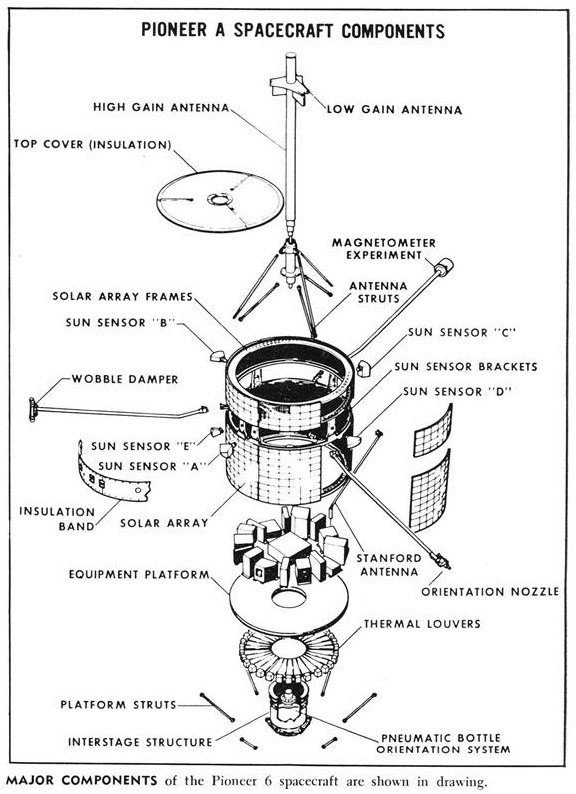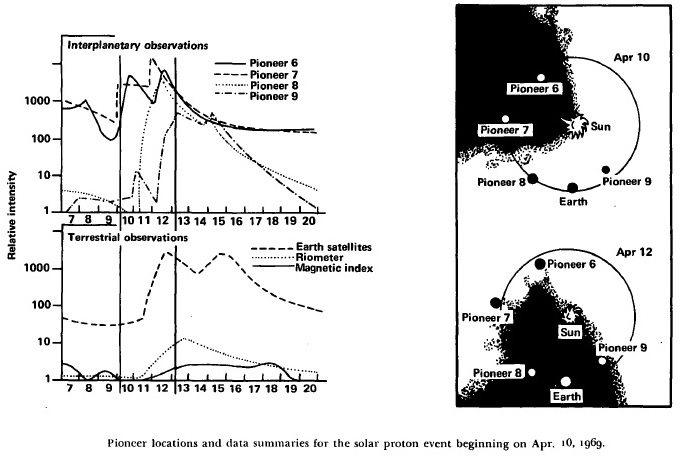[New to the Journey? Read this for a brief introduction!]

by Gideon Marcus
With the Apollo missions taking so much of our attention (there were four flights this year), it is understandable that unmanned missions and science have gotten short shrift. I'm going to try to address this oversight now.
Far out!
Do you remember Pioneer 6 (launched Dec. 16, 1965) and Pioneer 7 (launched Aug. 17, 1966)? They are deep space probes designed to observe the Sun from widely different vantage points. In fact, we've been a bit remiss: since '66, two more identical Pioneers have gone up: Pioneer 8 (December 13, 1967) and Pioneer 9 (November 8, 1968). A fifth and final Pioneer was launched August 27, 1969, but its carrier rocket exploded. The loss of that one is pretty bad; whereas the others are all spread out fairly equidistantly around the Sun, more or less as far away from it as the Earth, Pioneer "E" was going to be put in an orbit that kept it close to Earth, where it would be used to give as much as a two-week warning of dangerous flare activity.

Nevertheless, NASA is blazing along with four satellites. Indeed, thanks to the longevity and spread-out positions of Pioneers 6 and 7, they were able to perform an unique experiment. On Nov. 6, the two satellites were 175 million miles apart on a common line with the Sun, and scientists observed the difference in behavior of solar wind particles due to their passage through space in opposite directions. In a similar vein, on Dec. 2, when the spacecraft reached points on a common spiral line leading out from the Sun (the star rotates, so it flings out particles in a spiral rather than linear fashion), scientists measured different kinds of solar particles coming from the same events on the Sun.
We'll have to wait for the journals to publish any papers, but this is the kind of large-scale, long-term science made possible by the Pioneer probes!

Another cool example of Pioneer science

![[December 6, 1969] Here comes the Sun (and Moon) — Orbiting Solar Observatory, Apollo, ESRO, and Explorer 41!](https://galacticjourney.org/wp-content/uploads/2024/12/691206oso6a-637x372.jpg)